
Being a fly tyer is part of my self-identity. I’ve often said that even if every river and ocean on Earth dried up, I would still tie flies. It’s one of my passions in life and I consider it a high art. As such, I’m always interested in learning about how other tyers practice the craft. What are their overarching philosophies on fly design? Their vise-side rituals? Which tools do they use? From where do they draw their inspiration?
I think that in addition to practice and experimentation, studying others is crucial to your own evolution as a tyer. In my western fly fishing career, I studied the likes of Roman Moser, Alec Jackson, Oliver Kite, Frank Sawyer, Gary LaFontaine, Davie McPhail, Carrie Stevens, Lee Wullf, and too many others to name–the progenitors of the patterns we all know and trust.
But along my tenkara path, new names have emerged in fly design; ones who are consistently innovating and coming up with fresh ideas. They may be lesser-known names in the mainstream fly fishing world, but (in my mind) are just as deserving of recognition as the household names.
One such tyer is Jason Sparks. If you’ve been following any of the tenkara circles in social media, you undoubtedly know his name. He’s been on my radar for well over a year now and I’ve been consistently impressed with his simple, yet unique and imaginative designs. So I just had to get look under the hood a little to see what makes Jason tick, and, learn more from a fellow tyer I admire to further my own evolution. I hope you learn something too …
Interview with Jason Sparks
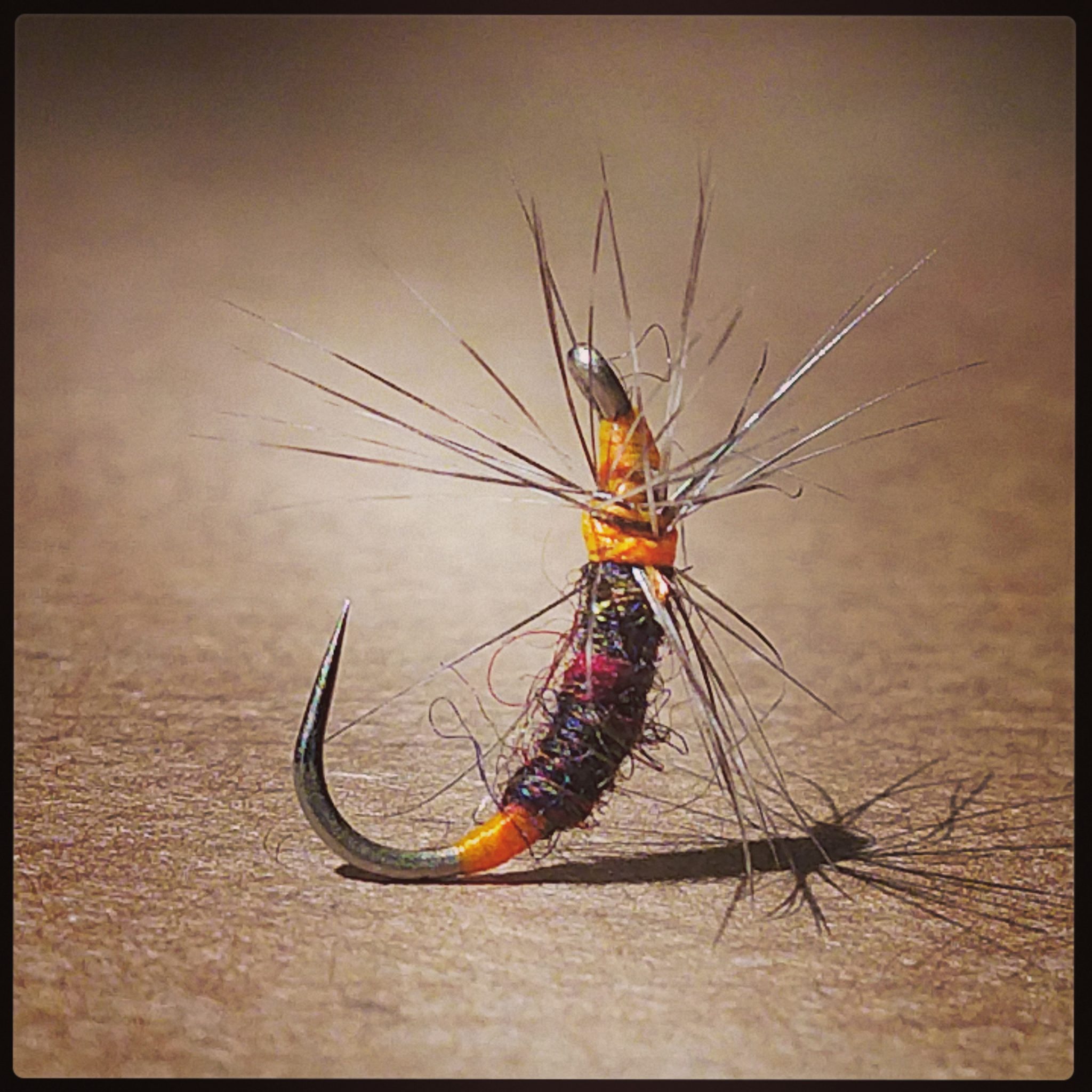
KLASS: I come across dozens (if not hundreds) of fly patterns every month online. Yet I can always immediately identify a “Jason Sparks” pattern just by looking at it–even before I read your name attached to it. I’m not sure if it’s the color palate you use, the material choices, the hackle styles … but I think many others would say the same. What is it that you think makes your patterns so unique and instantly recognizable?
SPARKS: I have heard this a few times before and never thought to ask what about it they found recognizable. After sitting a few minutes here and thinking on it I suppose there are probably three things that set that up.
First is probably to split direction hackle I tie into so many flies. That “gnarly” hackle has been around a few years since I started playing with it. At this point it happens by default when I’m tying. My muscle memory goes straight into that feather wrap on it’s own. If I’m tying up something different, I have to consciously think about it when I’m adding in the feather so it goes on differently.
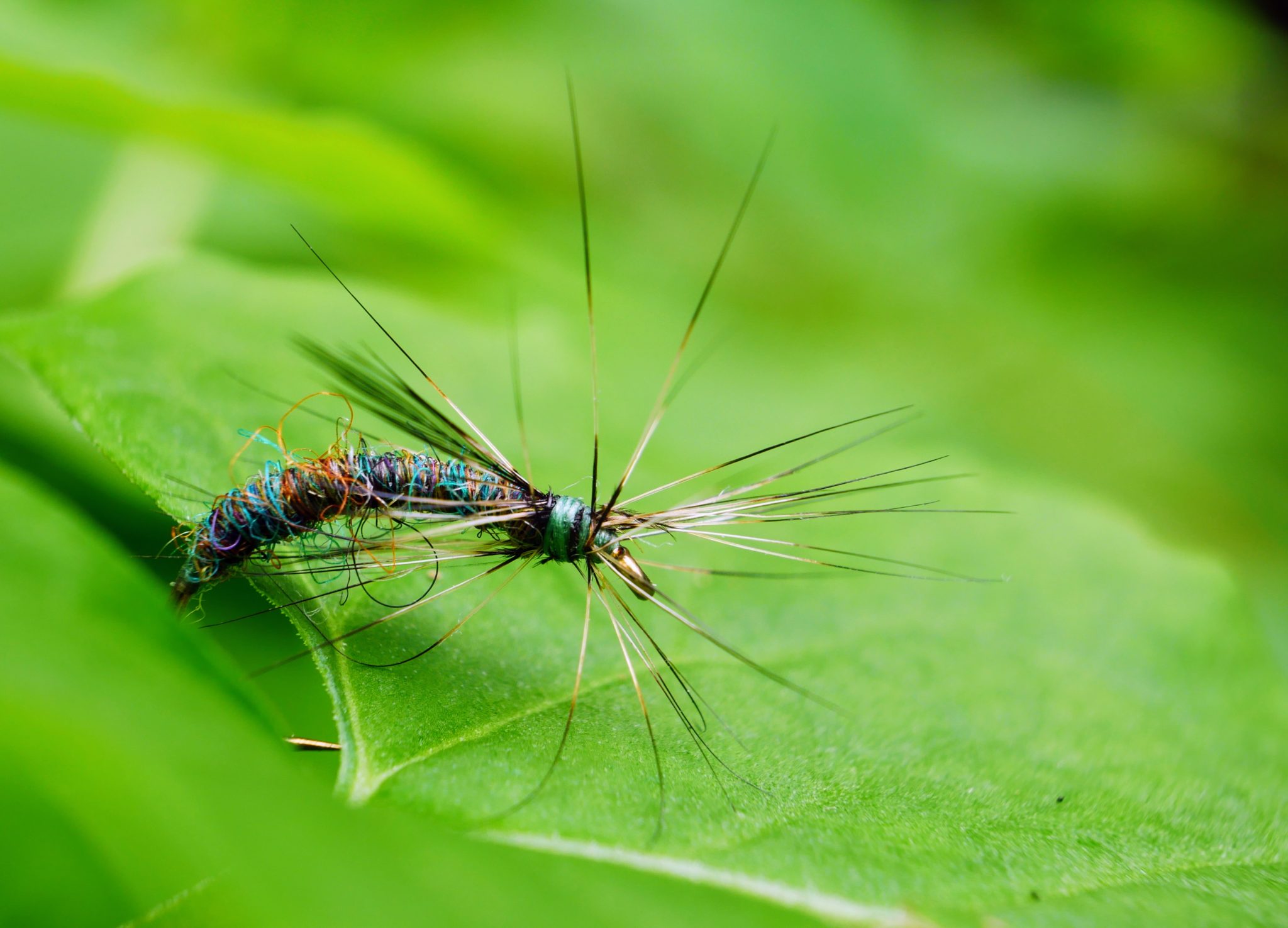
The second thing is likely the use of wool yarn for bodies. The yarn is so very durable and easy to work with. The colors are organic and dynamic which is a real appeal for me. There are a couple of friends that razz me pretty good for my significant use of Jamieson’s Shetland Spindrift yarn. Luckily they haven’t taken that to my use of Icelandic wool yarn yet.
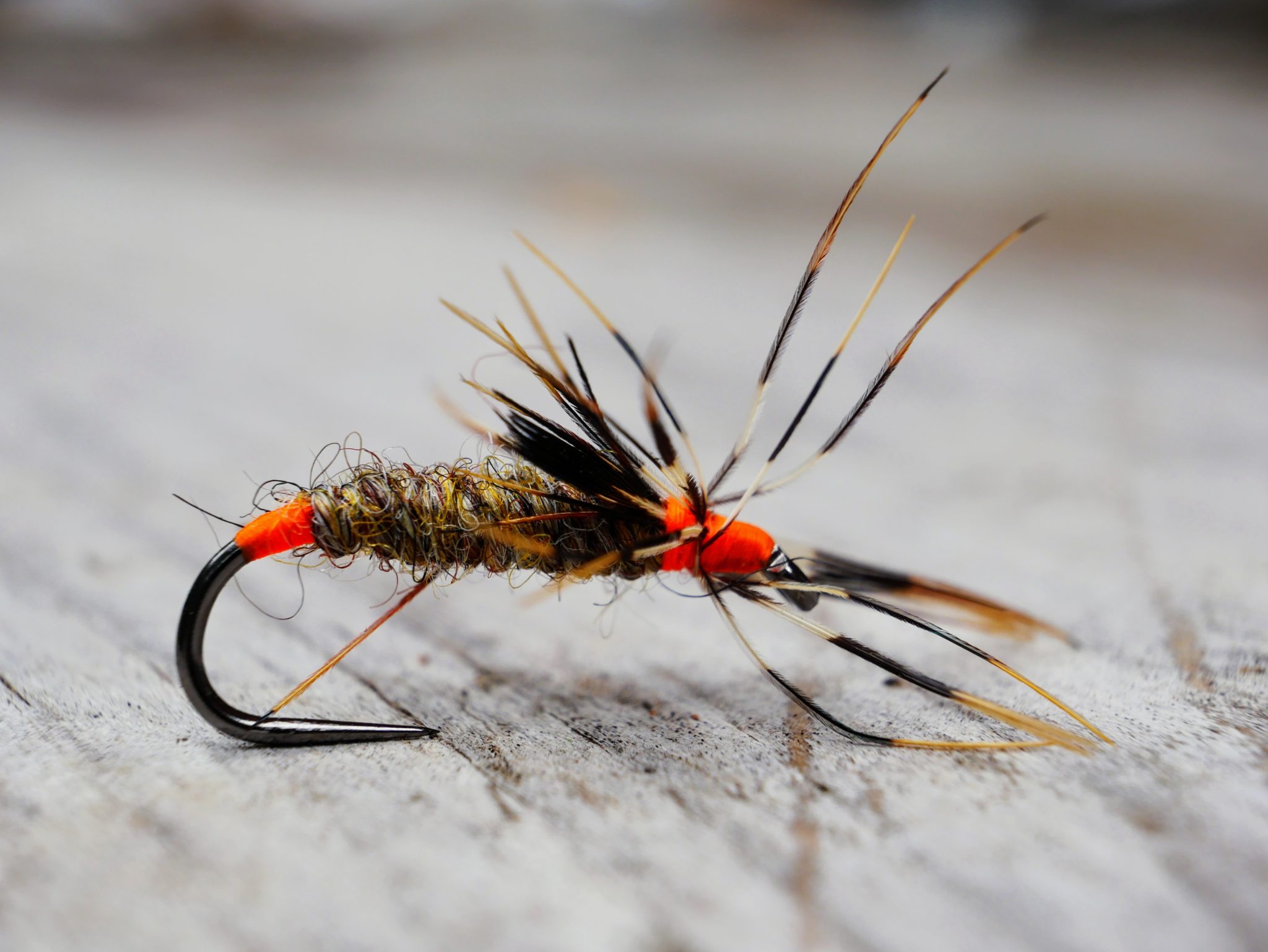
The third tell-tale may be the photographic image itself. I have been taking photos for decades and have my own way of seeing things. So there is that. The fact that I’m taking photos with repetition backgrounds and the same light sources often mark the image for the viewer. I got some yarn from Robb Chunco some time ago and have used the security featured envelope he sent it in as a “backdrop” for dozens and dozens of fly photographs. That subtle cross hatch in the image is as much of a hint to the viewer as the fly itself. Other aspects may just be my style in taking the photograph. For me, that is much more than a snapshot of the fly. It is a different craft for me altogether.
KLASS: Walk me through a typical session at your vise. You sit down and …
SPARKS: …dial it all out. I’ve made reference before about the movie line by K. Costner of “Clear The Mechanism.” For me, sitting down at the bench is truly that. I set a hook in the jaws and pick up a bobbin, and off I go to somewhere else in my mind. Many times my mind is working out project solutions, evaluating process improvements at work, parenting three daughters, and just rambling through a thousand thoughts. Sitting at the vise lets me tune out all things except that hook sitting right there.
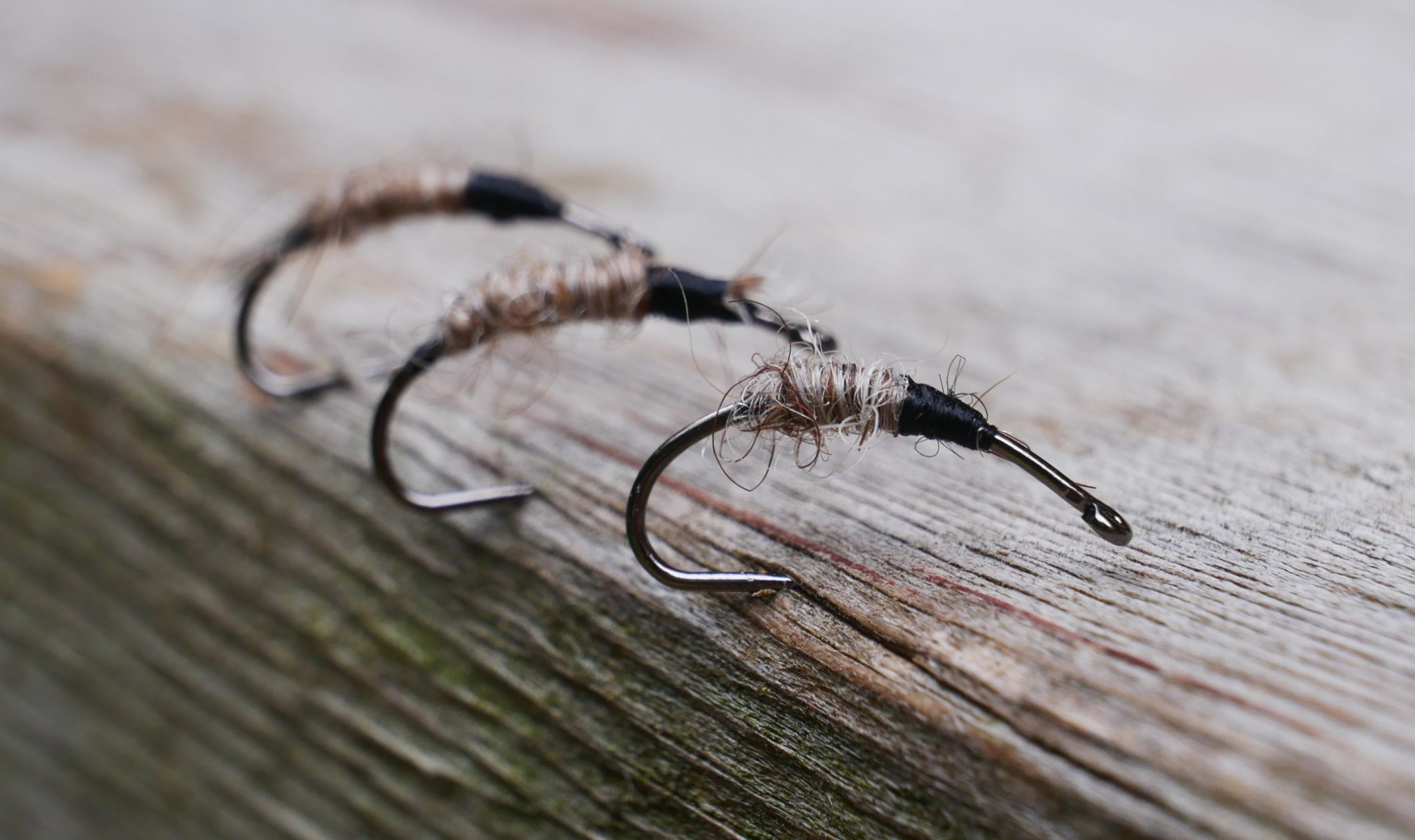
I am not a very organized person by nature, that just isn’t me. I tend to tie flies with the materials I have out for many many sessions in a row. I’ve been working through a box of 1000 #8 nymphs hooks for weeks now. Since I’m not tying for a specific trip or purpose, these will do for now. Prior to that I was working off 300 #12 Allen D102BL hooks, which is one of my favorites. I’ll have the same color thread on for days and the same two feather skins sitting out to choose from. I just keep popping of flies with these materials for weeks. When a new idea comes to me, I’ll go to the bin and dig out a new skin or hooks. Then I’ll add it to the pile of material on the desk. My tying desk is a mess to look at, however I know what is there. It works for me.
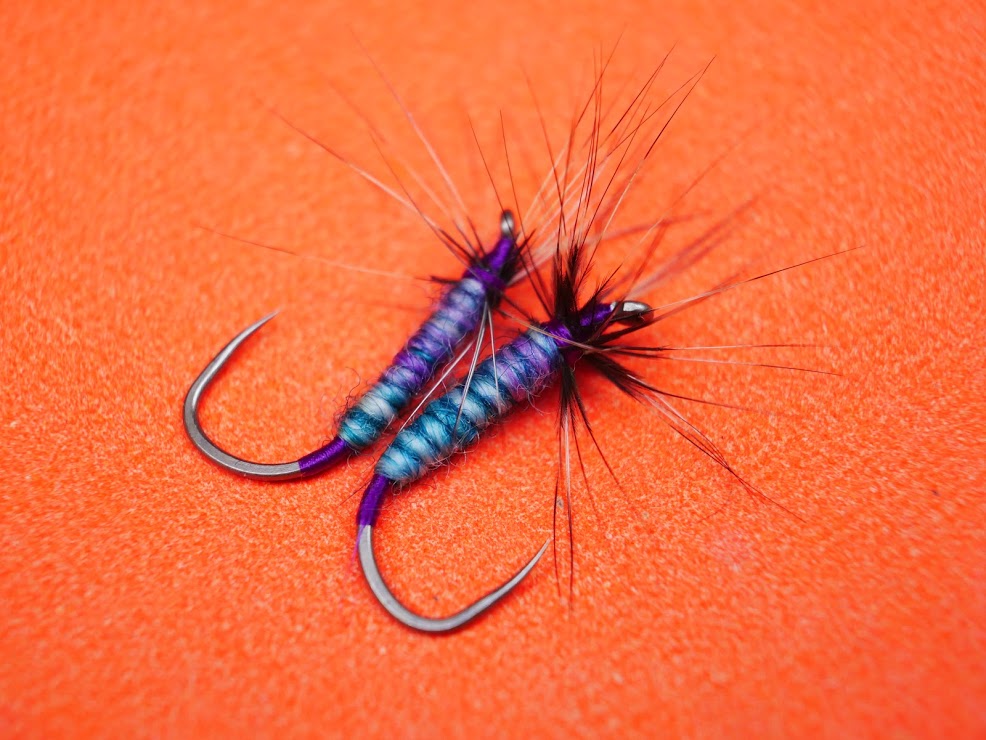
I will sit and tie out 40 flies while my wife and daughters sit and watch The Bachelor. I’ll sit and pop off 30 flies while I have a movie playing that I’ve seen a dozen times before so I don’t have to pay close attention to it. “Independence Day”, “Sahara”, “Bird Cage” and “First Blood” are great ones to have going.
I also will sit down and tie off four flies while my coffee is brewing for my workday. I will tie up 2 flies when I’m ready to walk out the door and my wife says that she’ll “be right there”.
I don’t have a typical “fly tying session”. I am very lucky to be able to keep my fly tying table in the living room so that I can be around everything my family does. I am very lucky that I do not have to keep it dressed for presentation at all time. My wife understands what this small desk, a vise and chicken feathers does to settle my mind. She supports all of this for me, and I am sure that is not so typical either.
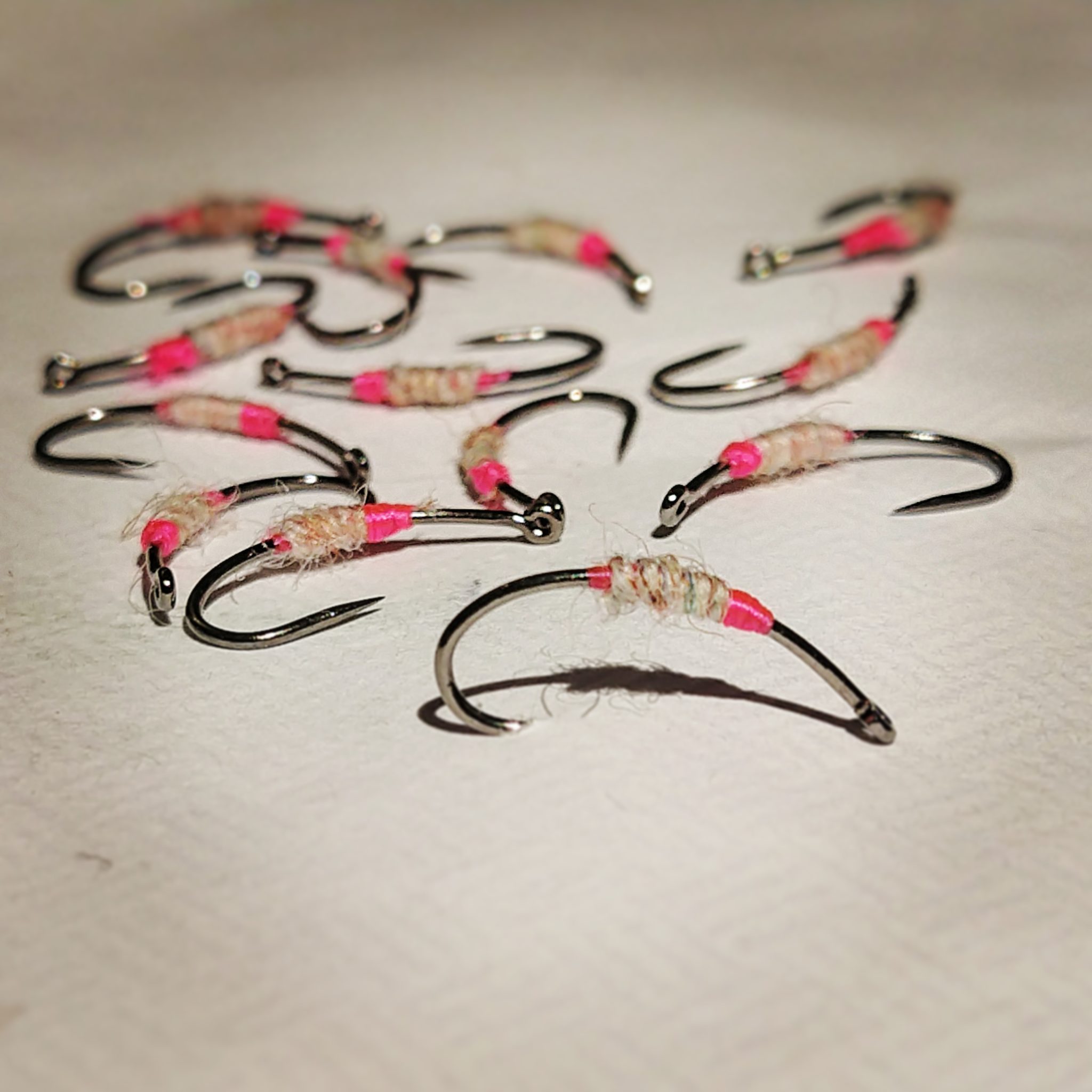
KLASS: I think your signature tying technique has to be the “double hackle” kebari, with the hackle points from one feather aiming both forward toward the hook eye and backward toward the hook bend and the stem bound in between. It just looks buggy and seems to provide a lot of animation no matter which direction the fly is moving. Can you detail your process for tying hackle this way and share what inspired you to come up with it?
SPARKS: Can you create “folklore” in your own mind? I mean, sometimes I wonder if my memory of how this came about is all accurate, or if it is a blend of things that just seem to make sense when I string them together? Maybe it has been told and remembered several times in ways that it may have changed over the years. Here is what I recall about it all. For sure the initial inspiration goes to Shotaro-san and his iconic black and white haphazard fly. There is the “tenkara branded” sakasa kebari and the reverse swept hackle contrasting the rear swept feathers of conventional wet flies. There also was a post somewhere and the individual was having trouble making the sakasa sweep forward with the feather. John Vetterli shared a tip that I had been using, which was essentially “just wrap the feather around a few times and use your fingers to sweep it all forward”. All of that is part of my memory of how this crazy hackle came about. Now I don’t claim this is a completely original idea or that it had never been done before. I do think that in the circles of fly fishing I am exposed to, no others are doing this style, and I do think of it as my little creation.
The idea for it is to increase options for fly manipulations and presentations in different conditions. The pattern is simple, non-descript and “buggy”, which seems to fit into the mold of traditional Japanese kebari patterns. I like to tie these without additional weight, and using wool yarn to achieve a slight weight. A slow sink rate offers the ability to control manipulations on the fall, instead of a heavy fly just sinking through the water column. That slow sink permits that twelve foot rod to impart amazing life movement to that bug. A slow twitching pulse with a hackle like this come alive like Peter Frampton.
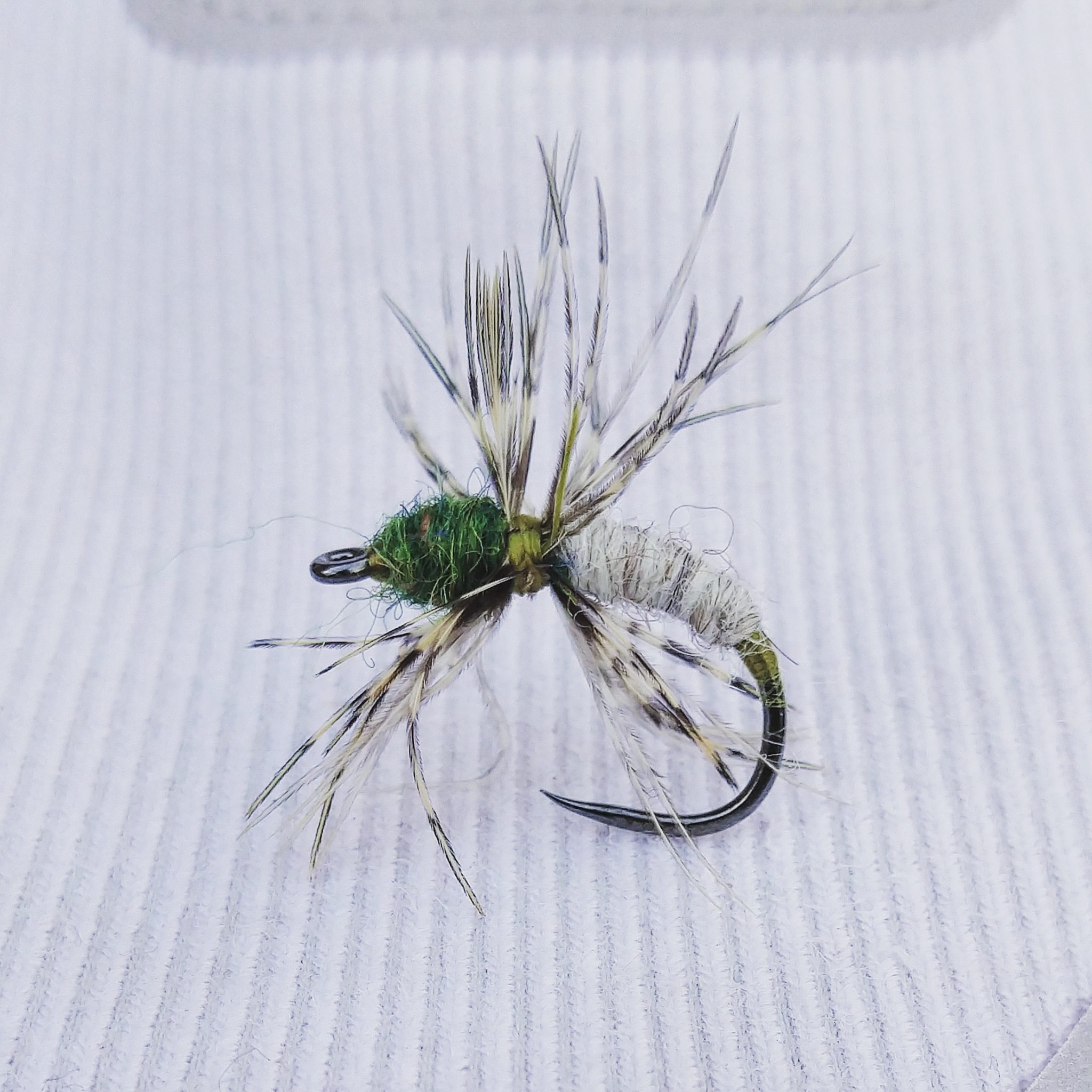
KLASS: Your style is obviously impressionistic, and unquestionably minimalistic. I’ve tried to replicate it, but my versions of your patterns just end up looking extemporaneous and “sloppy”. However, yours looks “sloppy with intent”–like they came out exactly the way you wanted them to look. Yours look like a Monet and my attempts look like I haphazardly splattered paint on a canvas. What are your guiding philosophies when it comes to impressionism in fly design? For example, which characteristics do you think matter most: color, movement, complexity, etc.
SPARKS: I appreciate the nod toward Monet, but I bet your Jackson Pollock fly catches fish too. After tying dozens of hundreds of my “style” of flies, I guess they probably do come out like I want. What guides my pattern creations? I suppose that is a good question, but it touches a potentially vulnerable spot for me. Maybe for many anglers as well. Let me give up the secret that I have not studied Entomology (bugs) and for the most part, have no interest in it. I’m not well versed in Ichthyology (fish) either for that matter. I do know a bit more than this, but it might all resolve to this as a lowest denomination of information needed: Fish Eat Bugs.
I like simple flies. I have no need for patterns of exactness, micrometer proportions or eleven materials. I prefer unweighted, wool yarn bodied, gnarly hackled flies. I’ll vary colors in the thread against the yarn color to offer a contrast between the two. My feathers are most often black, white or medium brown. I can vary the size of the hooks, amount of materials and quantity of feather to control sink rates and action performance in the water. I have a great deal of confidence in that I can read the water, that I can cast to the spot, and that I can dance my bug enough to get that fish.
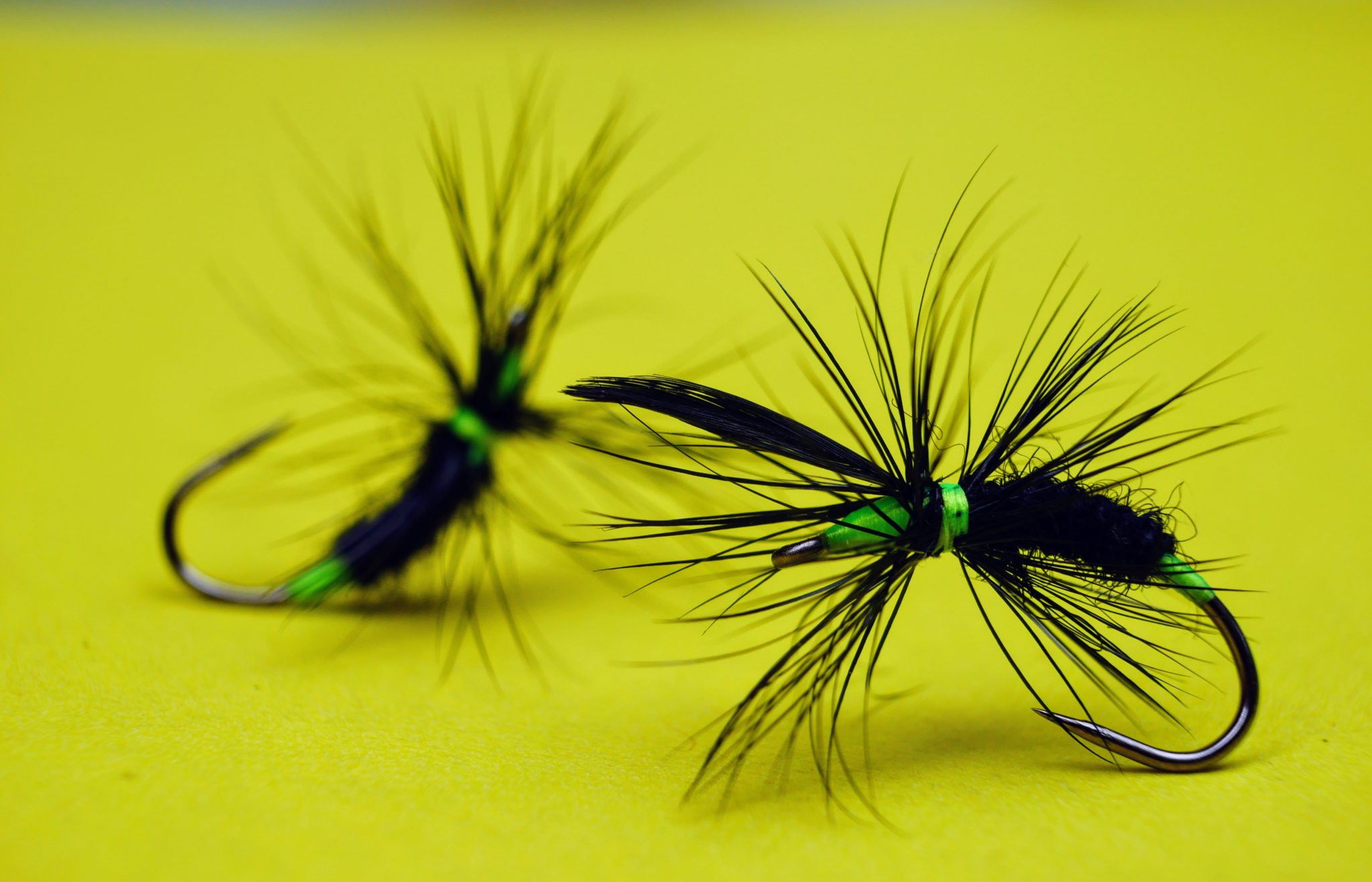
The characteristics that are important to me need to fill two different values. One is that I am a fly fisherman that wants to catch fish. The other is that I am a fly-tyer that has a craft of creation. These are mutually exclusive and stand alone. The bonus is that we get to use them to scratch each others back, so to speak. I suppose another way to say this is that I tie flies for the fish and myself. Luckily, I seem to be successful enough for me on both sides of that equation.
KLASS: If we sat down at your desk right now, what would we see? Give us a quick tour of your favorite tools, vise, organization, thread, etc.
SPARKS: This picture is worth two thousand words. I just snapped this picture of my tying desk. I have my original AA vise in a granite base I crafted. I have a pheasant skin, two hen patches and a inidan rooster laid in there. I have some “root beer” and some black ice dub, chartreuse green tinsel, hand dyed multicolor merino wool yarn, several Spindrift yarns, some Zypher yarn in red and purple, Icelandic wool in natural and red. about 8 colors of thread. a box of 1000 #8 nymph hooks and an assortment of #8 – #14 hooks in scud and wide gape shapes. My “security envelope” for photo background. I see a roll of jute staring at me. Man, I don’t know what else is in there… but I know where it is.
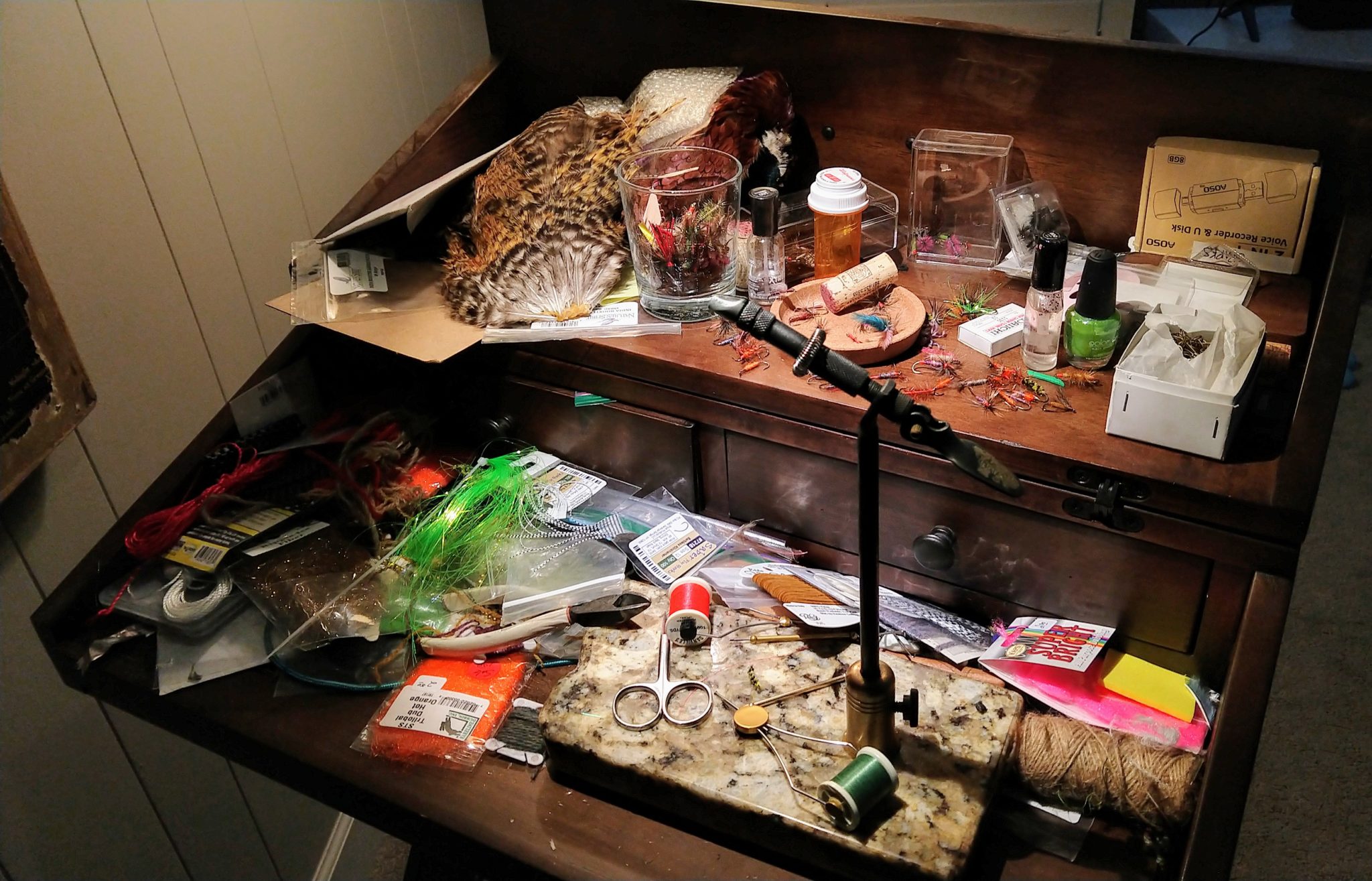
KLASS: Name three materials you think every fly tyer should have in their collection.
SPARKS: Barbless hooks, natural wool yarns, and indian rooster feathers.
KLASS: It seems that for the most part, you favor natural materials over the synthetics popular with so many tyers today. I do too. For you, is this by design or happenstance?
SPARKS: This is a choice for me. I subscribe to the belief that outdoor adventurers should be responsible for the environment they use, and that includes anglers. I like that I mostly use naturally sourced materials like feathers and wool yarns now, but it wasn’t always like that. As we learn in life, our maturity and wisdom around topics grow. As I learned more about things like cold water conservation through Trout Unlimited, reduced use of leads (weights) around waters, and what synthetics do in the environment… I changed. I recall seeing a “bamboo yarn” ate the store once. I thought that would be cool at the same time I was thinking “how can that be?” After a few minutes of research to learn what the process was to synthesize natural bamboo into a yarn I was bothered. At that point I stopped using floatants, acrylic yarns, and synthetic materials for the most part. I do still tie up streamers with mylar tails, craft foam topwater bugs and use ice flash dubbing occasionally. I do however choose not to use these flies in sensitive ecosystem waters.
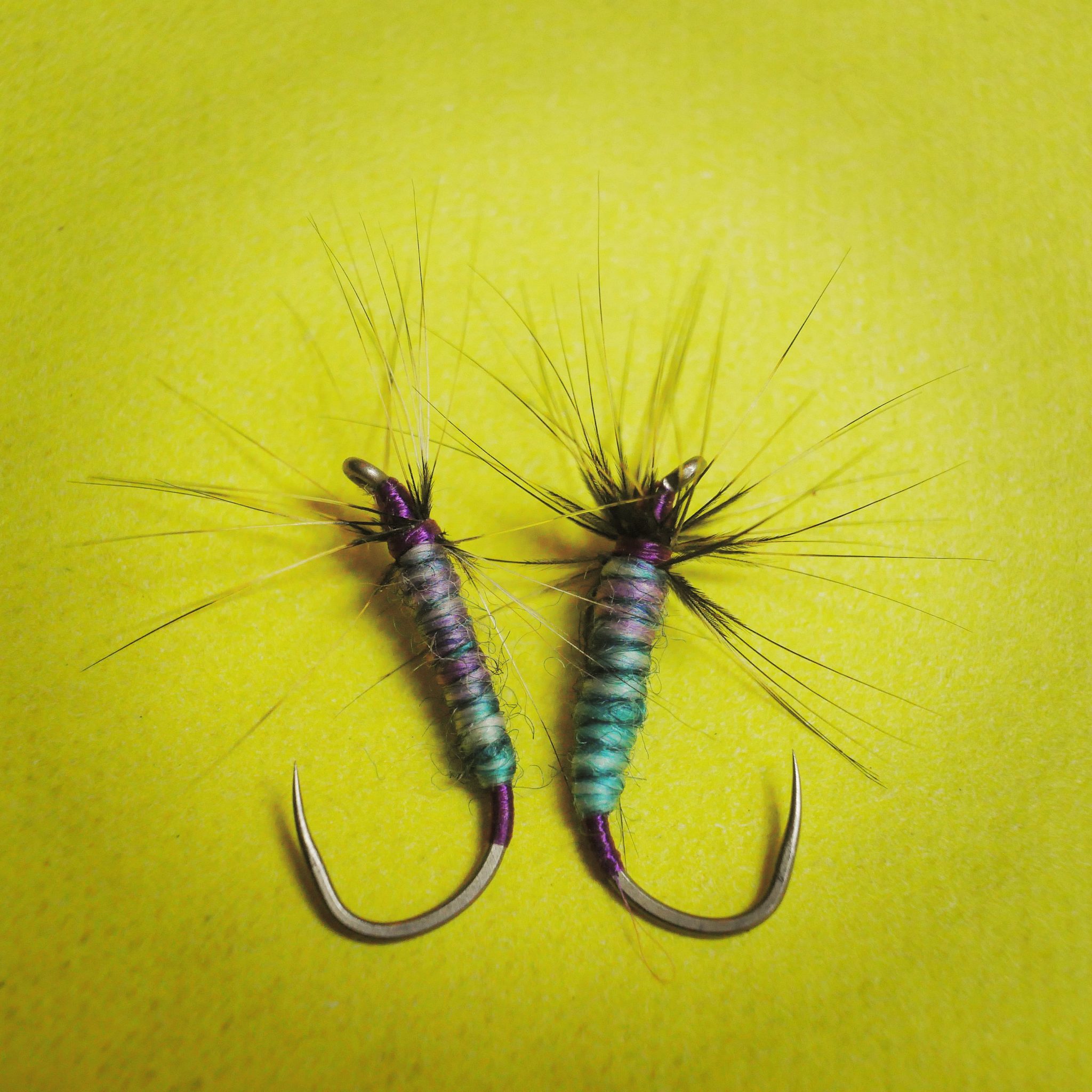
KLASS: You’re probably one of the most prolific tyers I know. It seems like you post several new ties daily and you must keep all of those flies somewhere. What kinds of fly boxes do you prefer to store your creations?
SPARKS: I keep a mason jar or some other small glass jar on my bench. When I pop a bug off, it goes in the jar. When the jar gets full, it goes on a shelf and a new jar is placed there. I do have several large jars on shelves full of flies. When I get ready to go fishing, somehow I trick myself into thinking I don’t already have flies in my Zimmerbuilt sling and that I need to choose more. That, or maybe I’m just interested in trying out fresh flies I’ve been tying up. I usually dump a jar onto the counter and sort out two dozen or so and place them in an Altoids tin. My bag carries several little tins all the time. That is my preferred “fly box” to carry out on the water.
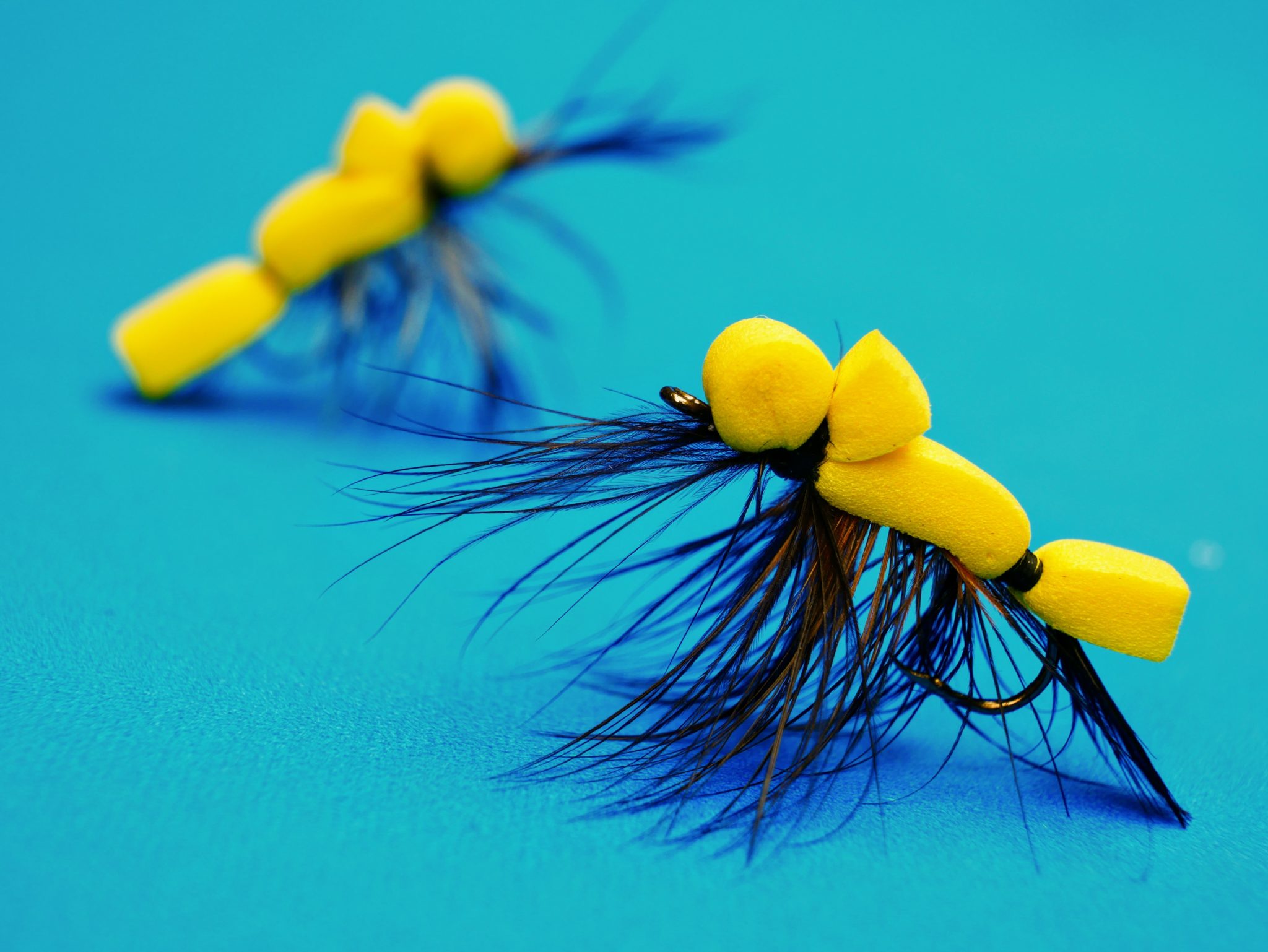
KLASS: If you could only tie one pattern for the rest of your life, what would it be and why?
SPARKS: In the fly fishing world we often hear a question about confidence patterns. For me it is my own “GnarlyFly”. I have fished this pattern in every body of water I have touched over the past few years and it produces for me in almost every condition. This is my “go to” fly for casting on the water. Your question though was about what pattern would I tie. I’m not a fan of asking to change up a questions or to set parameters on it. When I think of a “same pattern” it makes me wonder if that includes slight variations in colors, size and weight. I’m going to stretch the question to include those variances and still call it the same pattern. It is still the GnarlyFly. From sizes of #18 to #6, with natural to vibrant colors, with yarn weight or an added bead, this bug gets it done. On the typing part of it all, I love tying this fly pattern. It is like a staple comfort food and I can’t imagine doing with it.
KLASS: What else are you working on now?
SPARKS: Here are a few patterns I tie and some I’m working out in my head right now.
Gnarlyfly
The full story behind this fly and the naming of it is out there. I was using “gnarlyfly” as sort of a working title for it while it was in rough draft form. I posted a few pictures over a few weeks using that name… and it just kinda stuck. Looking back on it, I wish it had a more formal naming ceremony or something. ha. Anyway, this is the “gnarly hackled” fly that has the double direction feather tied into it. This fly is silly productive.
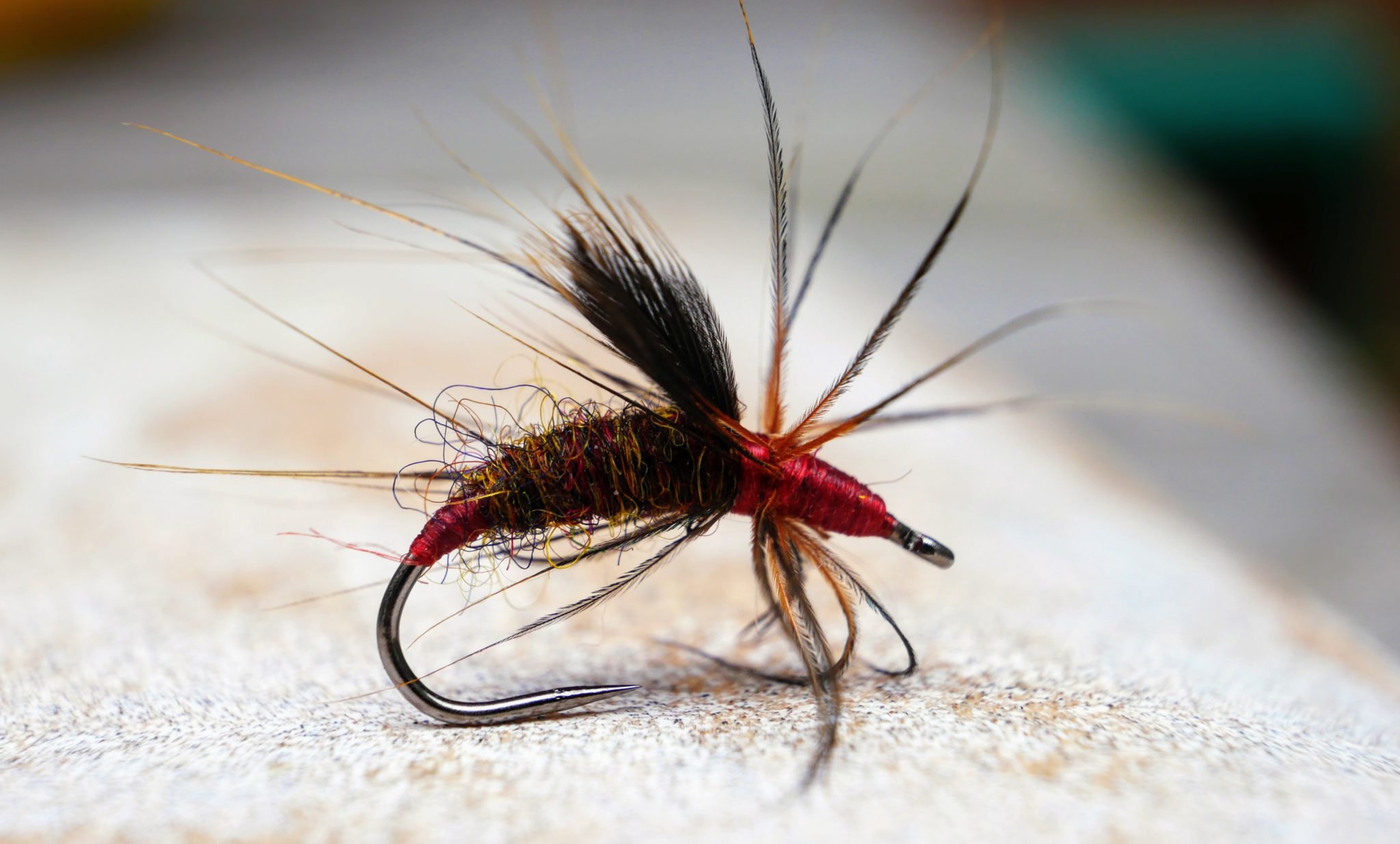
Micro Gnarlyfly
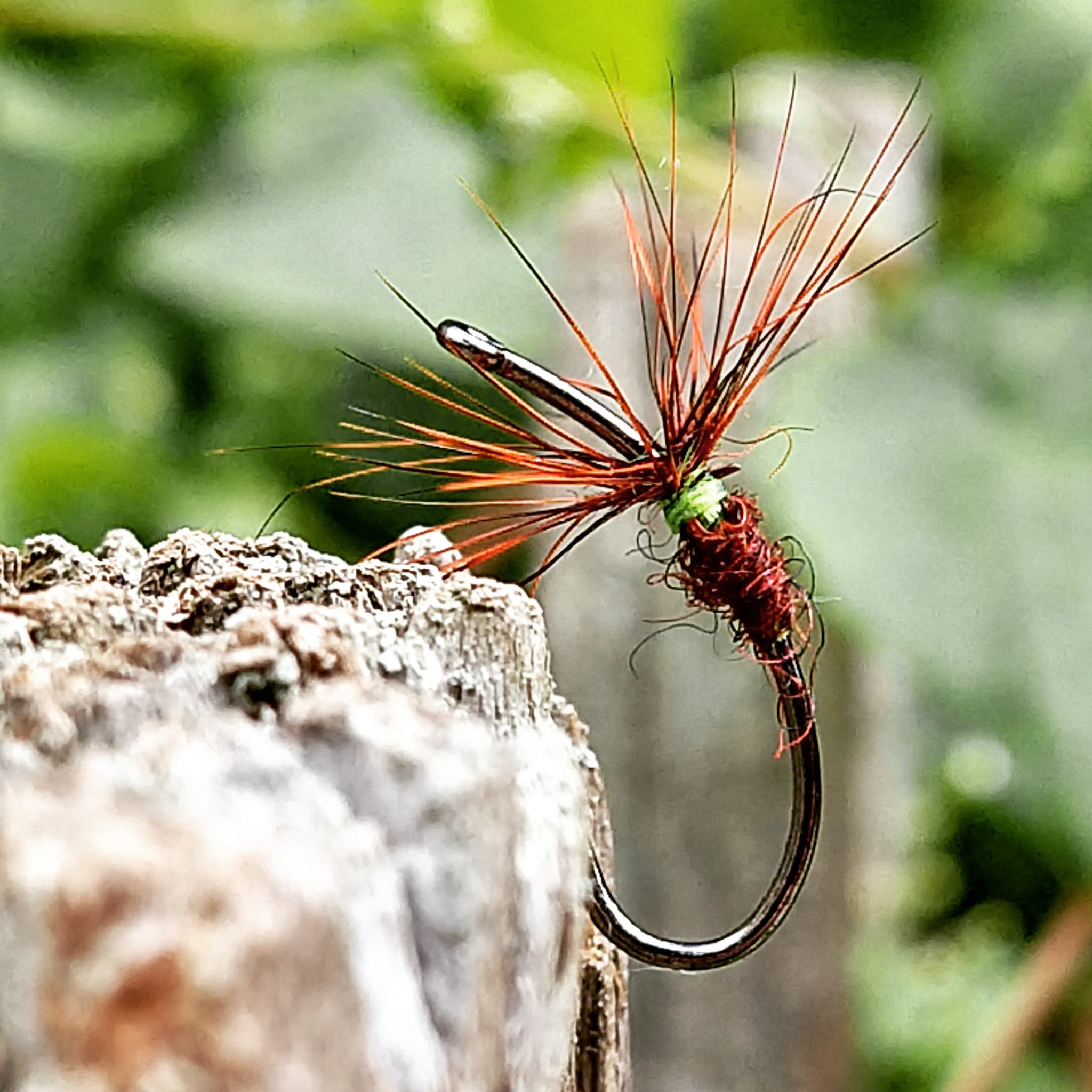
This pattern originated with using the longer shafted Klinkhammer hook shape to add length to the hook itself in an effort to make it easier to dislodge from fish mouths. I didn’t believe that the larger hook meant the fly itself had to be larger. I tied up very small killer bugs and sakasa kebari in about a size #18 on these #10 Klinkhammer hooks. It is a unique look that offers a small bug in a very castable weight, with benefits of the easier to remove longer hook. It had added value as an exercise in minimalism and simplicity.
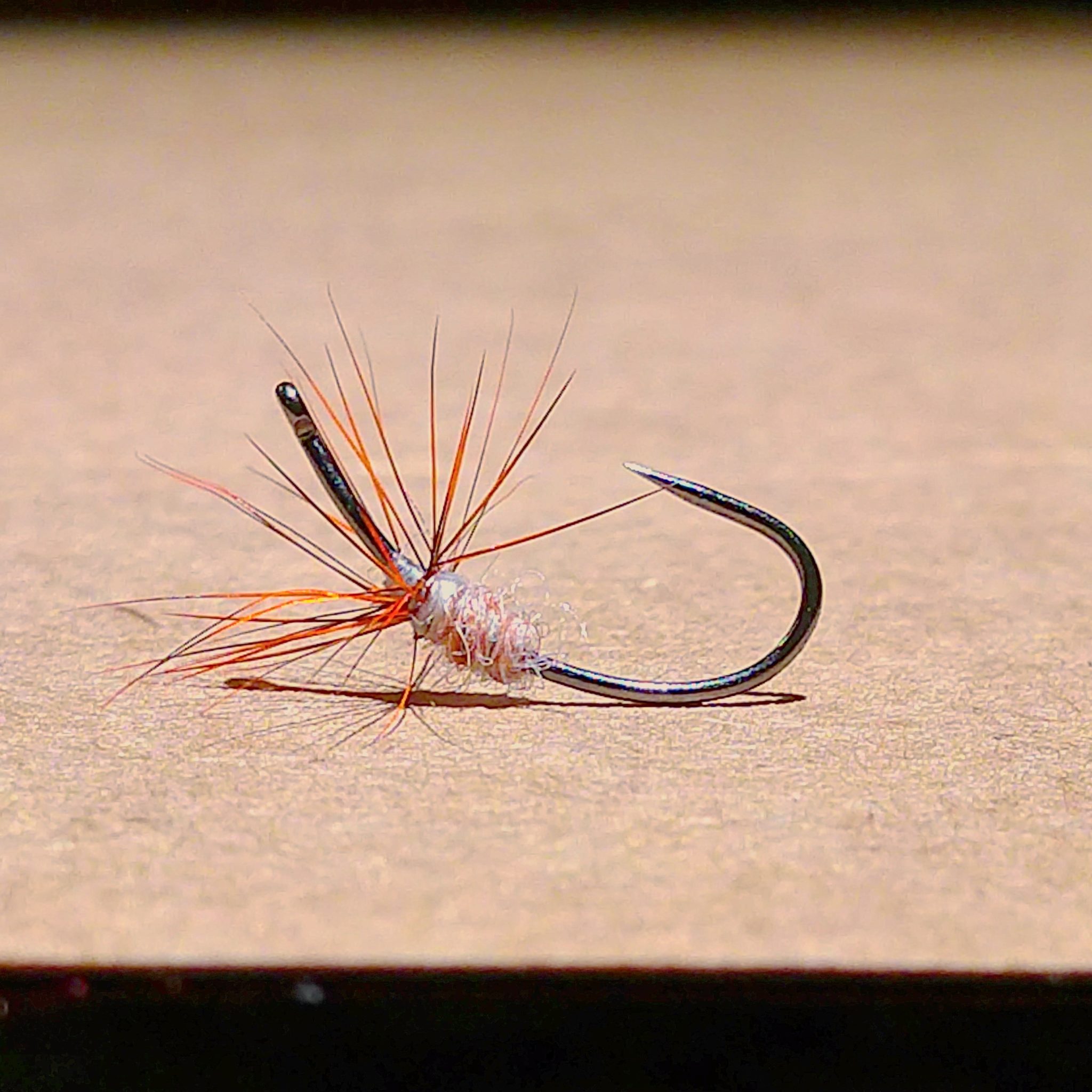
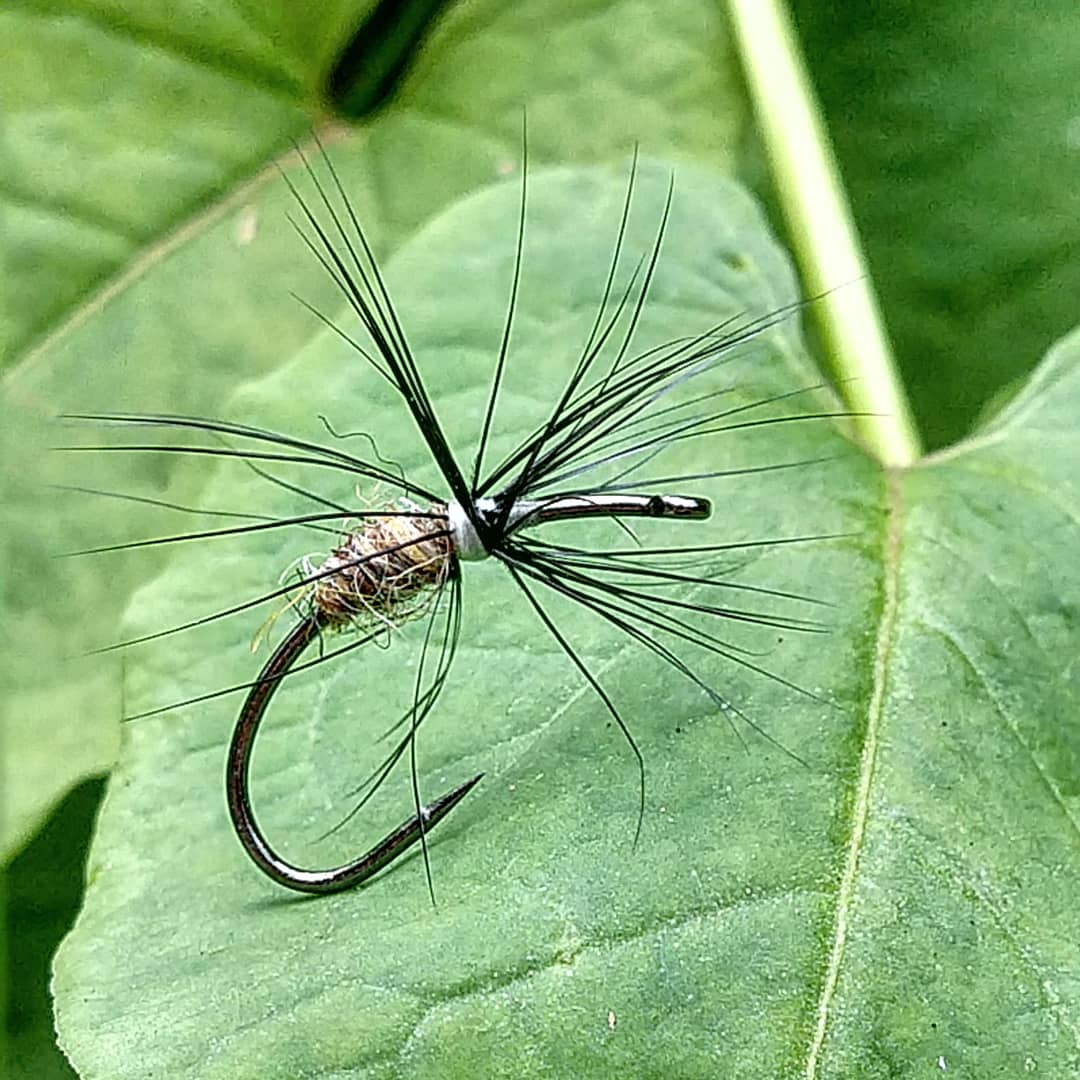
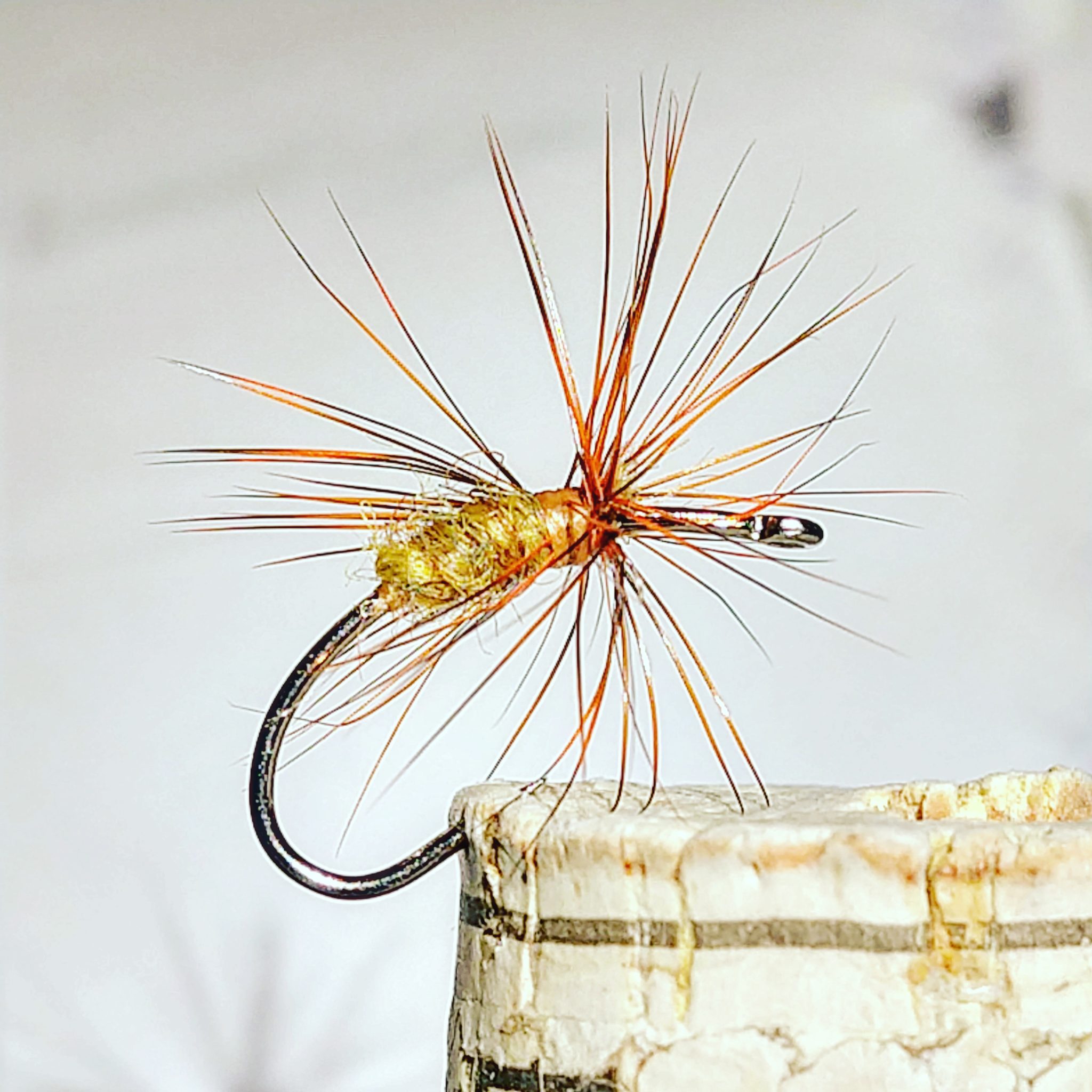
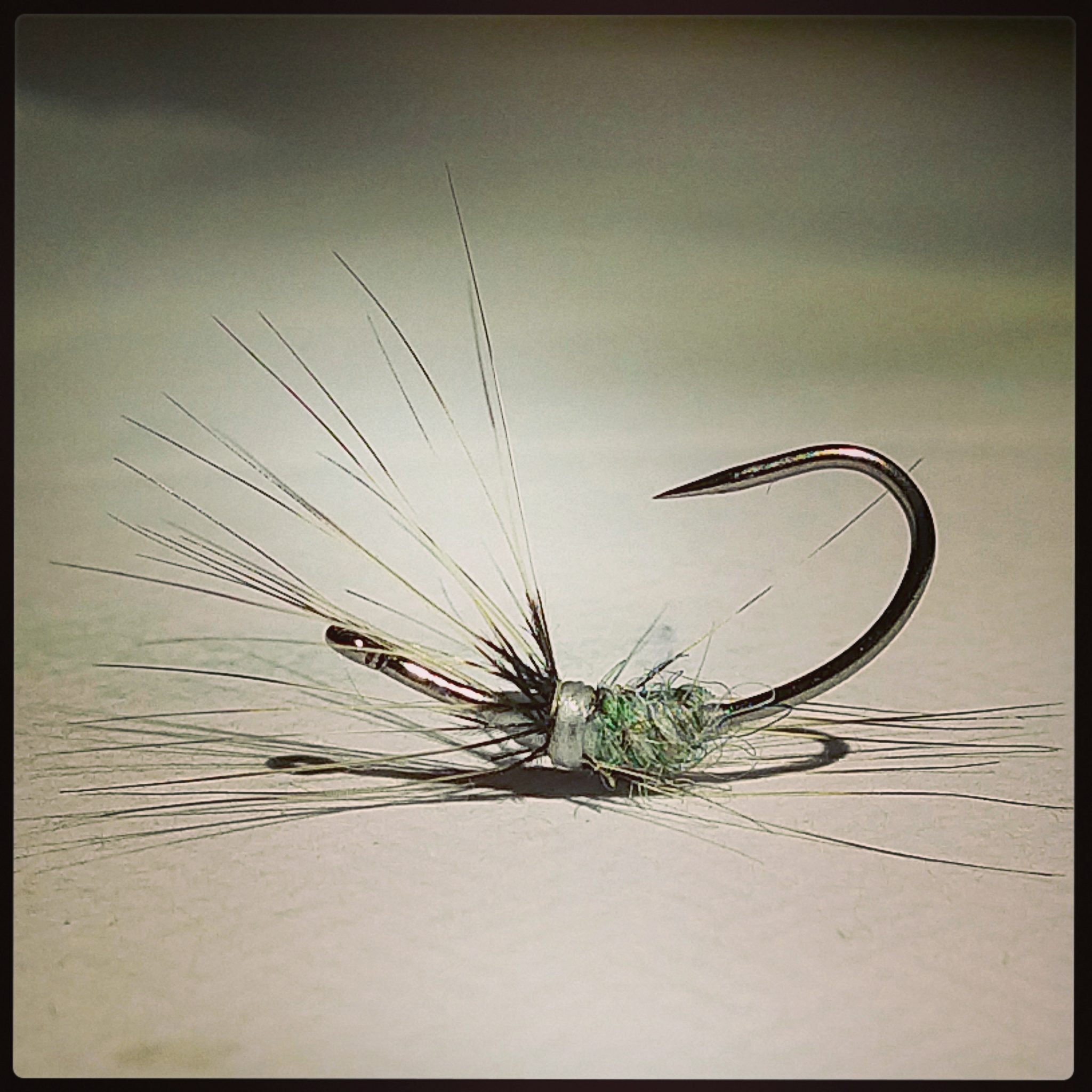
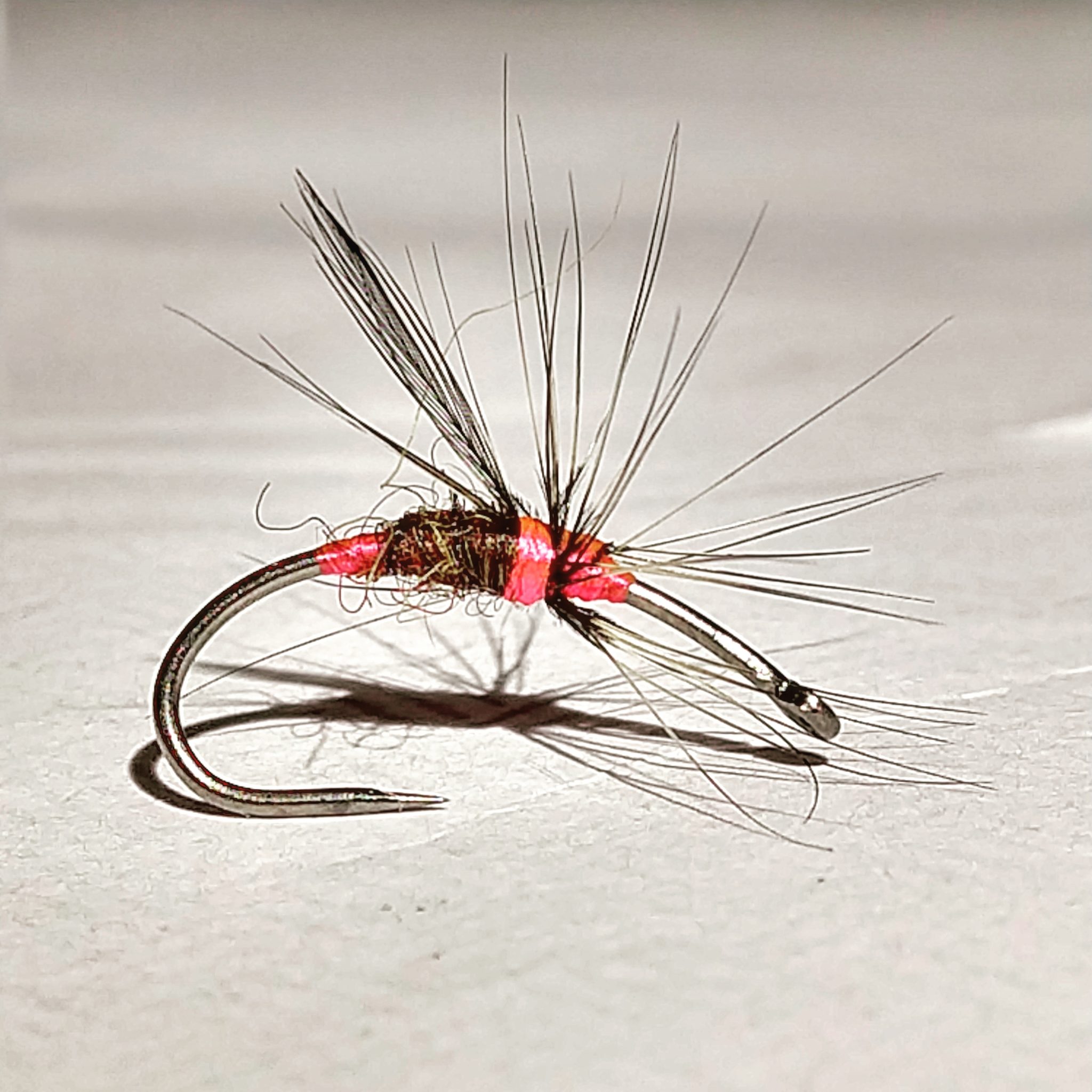
I have developed a slight signature on most flies I tie where the colored thread extends beyond the yarn body to the bend of the hook. This may add some value as a “hotspot” of sorts. I surely don’t think I do it for any reason like that now, although it may have originated from some thinking about it like that. There are very little you can do to make your fly look different that most others in the world that are similar in nature. If sixty killer bugs were dressed out in Bracken Spindrift and a chartreuse thread, mine might stand out a little with this small signature wrap I put in there. It is not important for any reason in the world except that it is just part of my thing.
Have you tied or tried any of Jason’s flies?
Please share your experiences or pics of flies you’ve tied in his style in the comments section below!








Those are some incredible looking flies!
Id love to try some of those flies.
Some of my favorite flis that I see on line are Jason Sparks’ creations. His jute flies are downright inspiring wraps that have defined body structure and hold a “buggy” look none the less. Great interview. Thanks for making this happen. It is nice to get the back story on other tenkara tiers.
Excellent article! Thank you for the great content!
Jason, great article and no, I have not tied or tried any of the other Jason’s flies. Truth be told I am kind of in a funk and haven’t tied any flies all summer. ☹
I found a new brand of wool that is working really well for me. The brand is called Nico, I found it on sale while I was buying some Spindrift from Little knits. The black with gold changes color with different light. Grab some on closeout at $2.40 a ball.
He Don, wow, that looks really interesting! The gold is metallic? Do you have any pictures of patterns you’ve tied with it?
This is the black and gold, and the purple with shiny red. These have both been killer flies. Tied on #10 scud hooks with ringneck pheasant soft hackle
More photos
Purple with red shiny
These all look great Don! Thanks for posting the pics. I will be sure to look up this yarn and give it a try.
Awesome!!! I am first year Tenkara and am shopping for tools/materials to Start tying my own….! thanks for these great blog posts on gear/techniques…!!!
Great site! Great article. How does Jason get the color variation in the wool yarn bodies? This really shows on the blue/ mauve and green flies.
Hi Kerry! The variegation is built into the yarn itself–it’s not my doing. But that’s why I like the Spindrift so much.
Hi Jason…was led to this interview article after seeing Jason S’s recent article on his “Gnarlyfly”…oh boy another yarn based, simple, only one you have to use Tenkara flies… great interview…learned more here after reading Jason S’s Tenkara Angler article…can’t wait to try his split hackle approach… spent the morning looking at India rooster/hen necks and saddles–new to me–I think(need to look at my inventory)…but probably will be adding to my arsenal…an excuse to shop and buy–ha ha… and another container of flies to fill (love his mason jar story)…
We are finally post-forest fire smokey here in Oregon, so safe to hopefully get out with my new rod and try out some of your flies, and a few other “only one I ever use” flies… hope you have been wetting your line lately…
I find my self reading this article again and again for inspiration 🙂
Simplicity, innovation and out-of-the box ideas are refreshing.
I have been focusing on simplier and simplier flies – testing the limit what fish take and what not.
Also the use of wool yarn is something I apply to my flies also. I tend to look 3 or 4 ply silk/wool mixture yarns in fingerling or lace thickness. Usually they are really good for fly tying as silk gives strenght and gloss and wool gives buggyness.
Local small wool mills are excellent source of non-traditional yarn is decent price. And sometimes you can get untreated “natural” wool yarn that is only washed, but not treated or colored. This is really ruff and makes the best grey / brown bodies.
Jason’s,
Thank you!
It is refreshing to know I’m not the only one who loses themselves in fly tying. For me, i’s a wonderful escape into a therapeutic, relaxing, and creative world. I challenge myself to use 2 materials or less when tying and I don’t count hook and thread as materials. I prefer to employ minimalism in my flies that parallels my Tenkara approach. This article will help me add to my arsenal. I’m very interested in trying some Micro Gnarlyfly’s and hackled Gnarlyfly.
Again, thank you Jason’s for what you have and continue to give to the sport of Tenkara.
Much Love and Respect,
Jerry